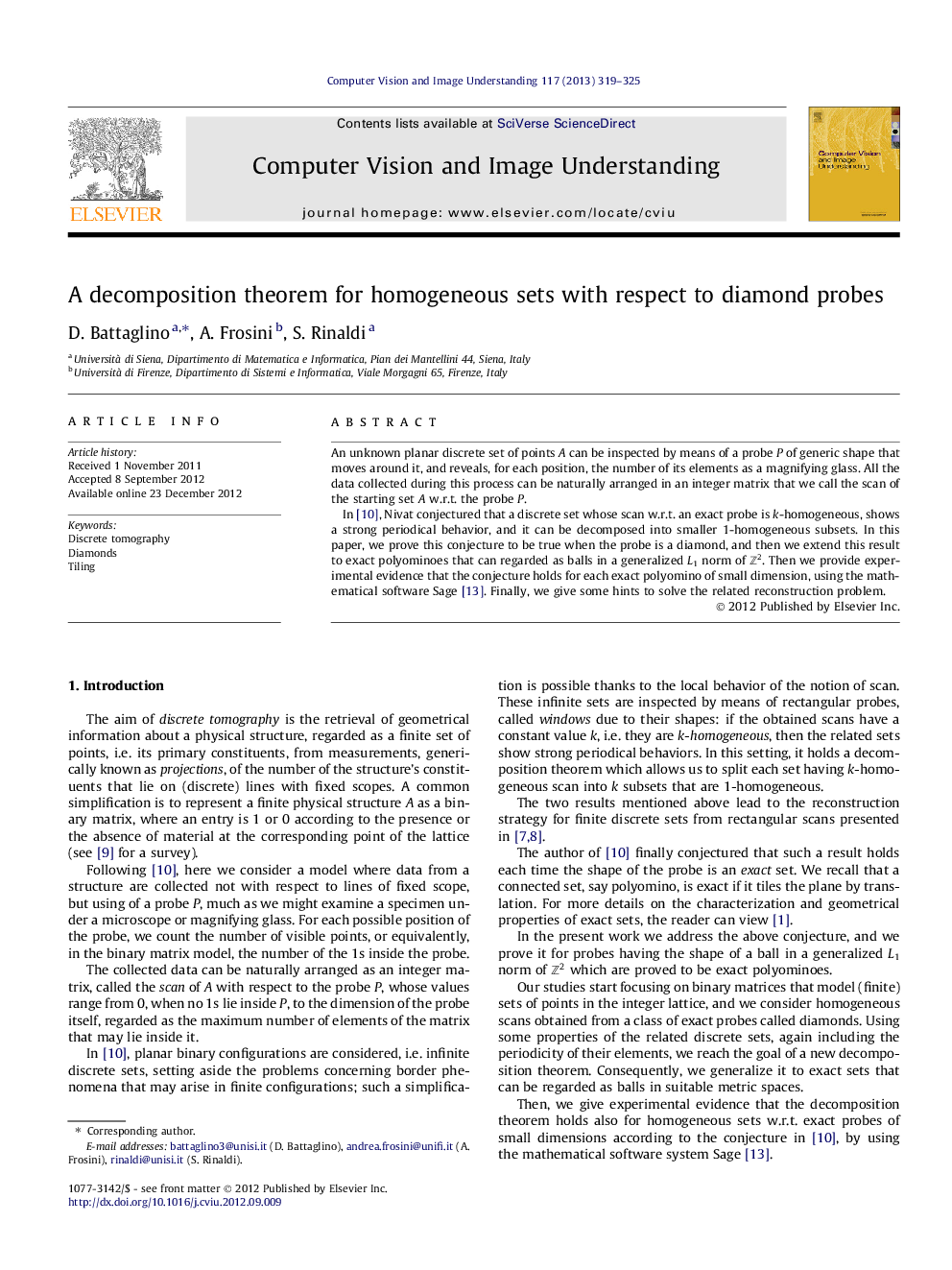| کد مقاله | کد نشریه | سال انتشار | مقاله انگلیسی | نسخه تمام متن |
|---|---|---|---|---|
| 525847 | 869031 | 2013 | 7 صفحه PDF | دانلود رایگان |

An unknown planar discrete set of points A can be inspected by means of a probe P of generic shape that moves around it, and reveals, for each position, the number of its elements as a magnifying glass. All the data collected during this process can be naturally arranged in an integer matrix that we call the scan of the starting set A w.r.t. the probe P.In [10], Nivat conjectured that a discrete set whose scan w.r.t. an exact probe is k-homogeneous, shows a strong periodical behavior, and it can be decomposed into smaller 1-homogeneous subsets. In this paper, we prove this conjecture to be true when the probe is a diamond, and then we extend this result to exact polyominoes that can regarded as balls in a generalized L1 norm of Z2Z2. Then we provide experimental evidence that the conjecture holds for each exact polyomino of small dimension, using the mathematical software Sage [13]. Finally, we give some hints to solve the related reconstruction problem.
► An unknown planar discrete set of points A can be inspected by means of a probe P of generic shape that moves around it.
► Any exact polyominoes can be regarded as balls in a generalized L 1 norm of Z2Z2.
► A discrete set, whose scan with an exact polyomino probe is k-homogeneous, can be decomposed into 1-homogeneous subsets.
Journal: Computer Vision and Image Understanding - Volume 117, Issue 4, April 2013, Pages 319–325